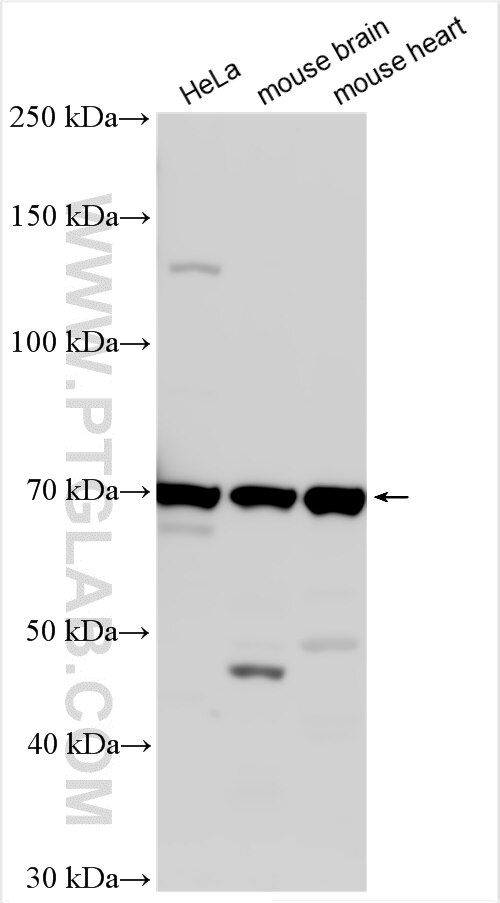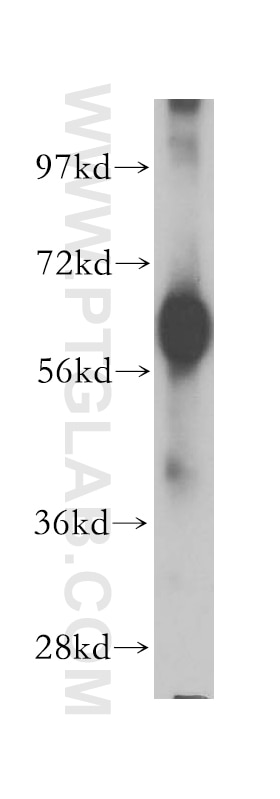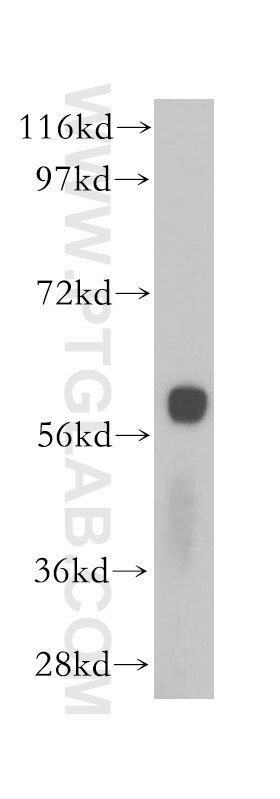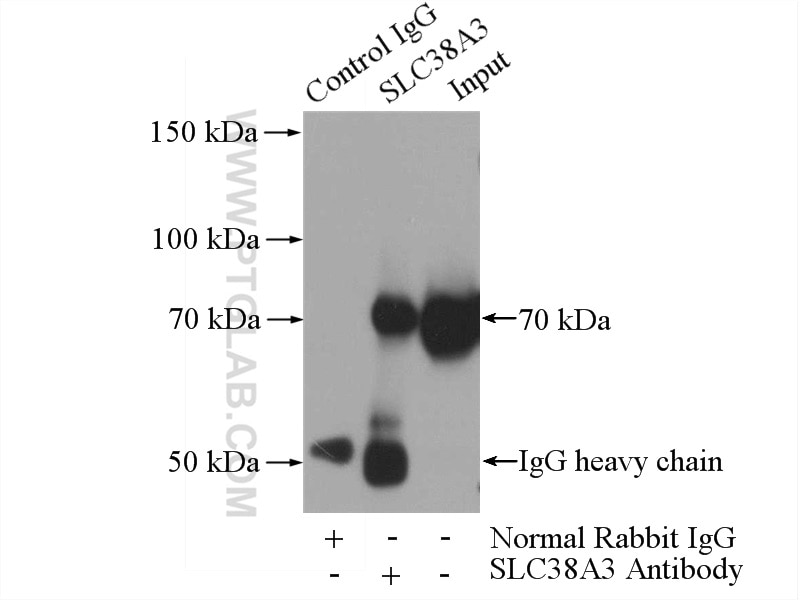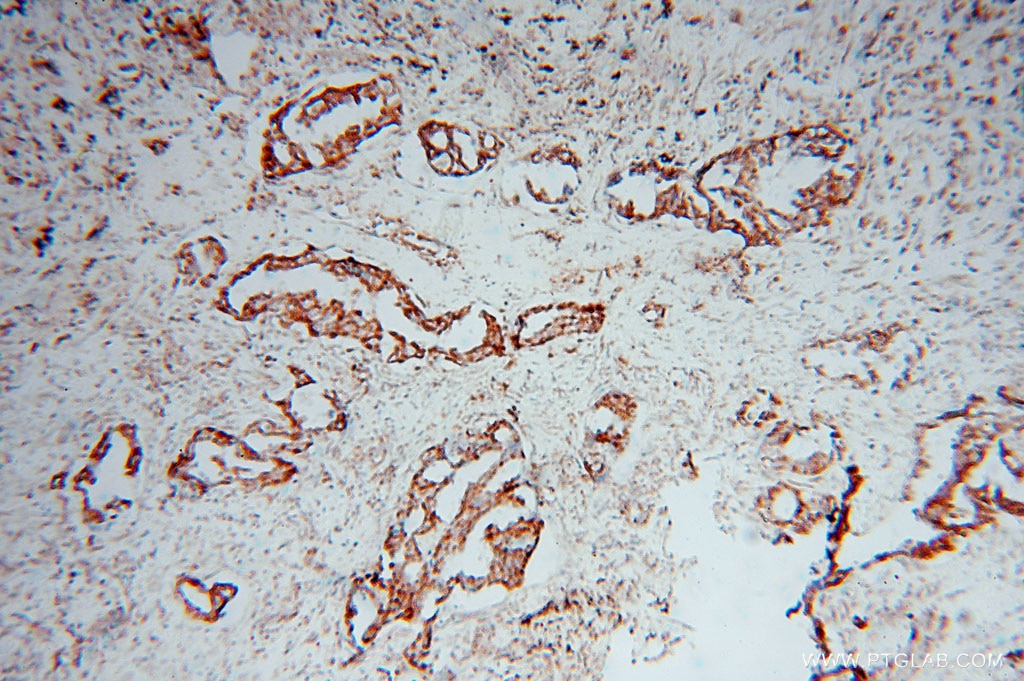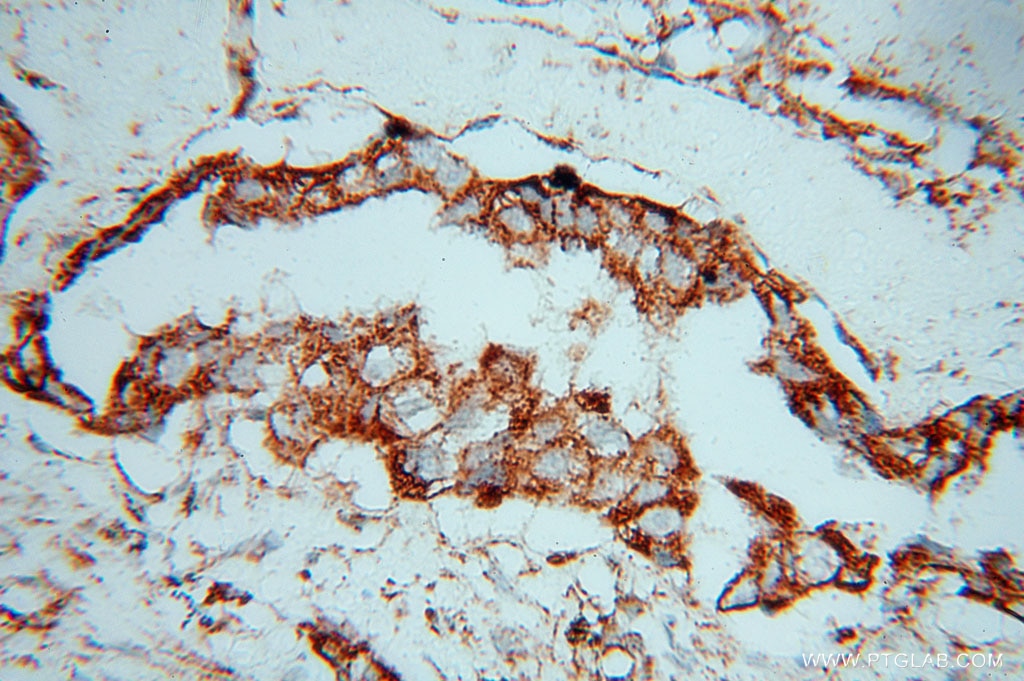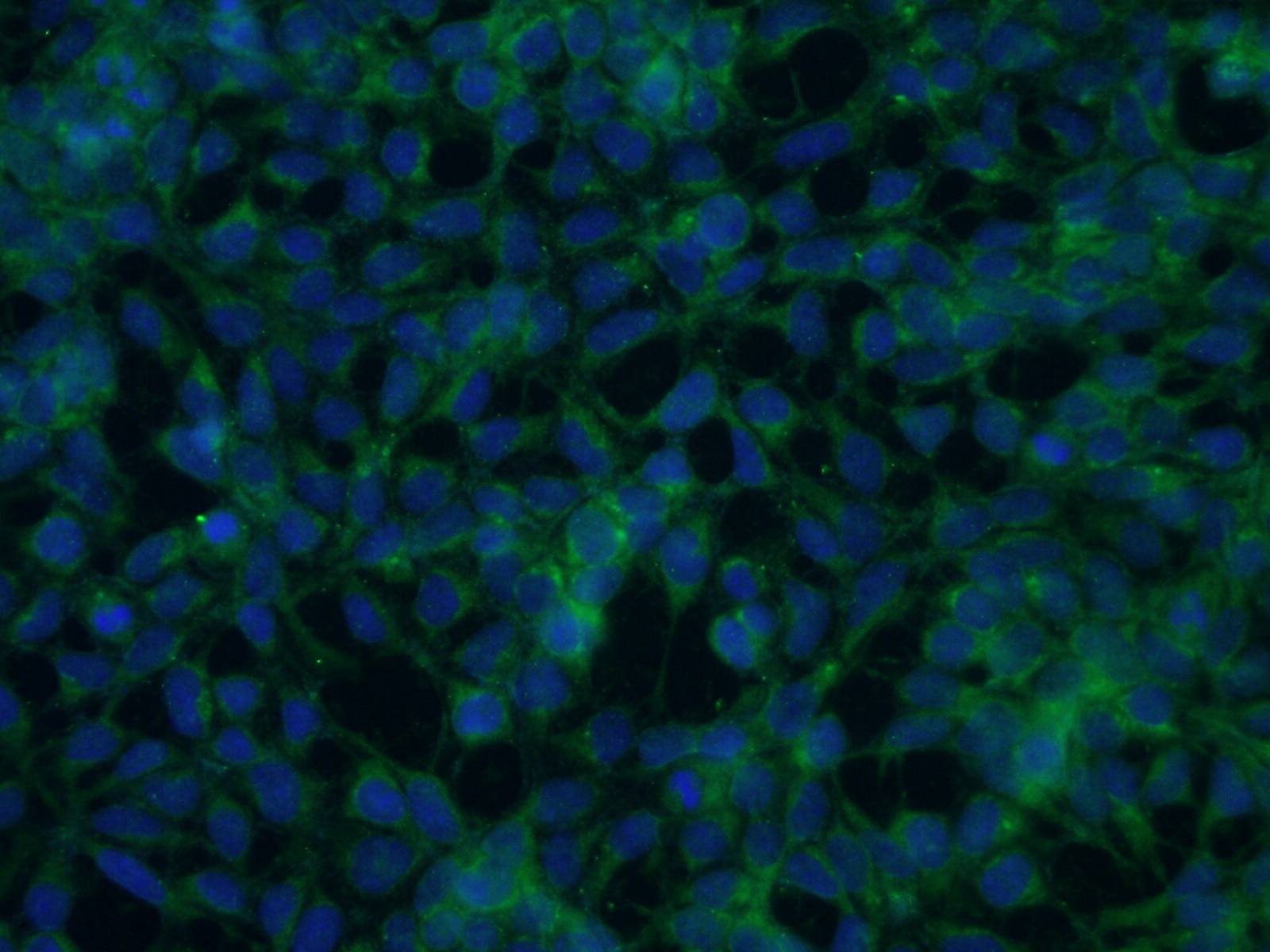- Phare
- Validé par KD/KO
Anticorps Polyclonal de lapin anti-SLC38A3
SLC38A3 Polyclonal Antibody for WB, IHC, IF/ICC, IP, ELISA
Hôte / Isotype
Lapin / IgG
Réactivité testée
Humain, souris
Applications
WB, IHC, IF/ICC, IP, CoIP, ELISA
Conjugaison
Non conjugué
N° de cat : 14315-1-AP
Synonymes
Galerie de données de validation
Applications testées
| Résultats positifs en WB | cellules HeLa, tissu hépatique de souris, tissu pancréatique de souris |
| Résultats positifs en IP | tissu cardiaque de souris |
| Résultats positifs en IHC | tissu de cancer du poumon humain il est suggéré de démasquer l'antigène avec un tampon de TE buffer pH 9.0; (*) À défaut, 'le démasquage de l'antigène peut être 'effectué avec un tampon citrate pH 6,0. |
| Résultats positifs en IF/ICC | cellules HEK-293, |
Dilution recommandée
| Application | Dilution |
|---|---|
| Western Blot (WB) | WB : 1:1000-1:4000 |
| Immunoprécipitation (IP) | IP : 0.5-4.0 ug for 1.0-3.0 mg of total protein lysate |
| Immunohistochimie (IHC) | IHC : 1:20-1:200 |
| Immunofluorescence (IF)/ICC | IF/ICC : 1:50-1:500 |
| It is recommended that this reagent should be titrated in each testing system to obtain optimal results. | |
| Sample-dependent, check data in validation data gallery | |
Applications publiées
| KD/KO | See 1 publications below |
| WB | See 17 publications below |
| IHC | See 3 publications below |
| IF | See 3 publications below |
| IP | See 1 publications below |
| CoIP | See 1 publications below |
Informations sur le produit
14315-1-AP cible SLC38A3 dans les applications de WB, IHC, IF/ICC, IP, CoIP, ELISA et montre une réactivité avec des échantillons Humain, souris
| Réactivité | Humain, souris |
| Réactivité citée | Humain, souris |
| Hôte / Isotype | Lapin / IgG |
| Clonalité | Polyclonal |
| Type | Anticorps |
| Immunogène | SLC38A3 Protéine recombinante Ag5553 |
| Nom complet | solute carrier family 38, member 3 |
| Masse moléculaire calculée | 504 aa, 56 kDa |
| Poids moléculaire observé | 65-70 kDa |
| Numéro d’acquisition GenBank | BC042875 |
| Symbole du gène | SLC38A3 |
| Identification du gène (NCBI) | 10991 |
| Conjugaison | Non conjugué |
| Forme | Liquide |
| Méthode de purification | Purification par affinité contre l'antigène |
| Tampon de stockage | PBS with 0.02% sodium azide and 50% glycerol |
| Conditions de stockage | Stocker à -20°C. Stable pendant un an après l'expédition. L'aliquotage n'est pas nécessaire pour le stockage à -20oC Les 20ul contiennent 0,1% de BSA. |
Informations générales
SLC38A3, also known as SNAT3 or SN1, belongs to the SLC38 family of sodium-coupled neutral amino acid transporters. SLC38A3 mediates glutamine transport with sodium and proton coupled manner, and it contributes to ammonia metabolism in the liver and brain. SLC38A3 is highly expressed in the liver and brain astrocytes, with modest expression in the kidney, heart, and muscle. SLC38A3 may migrate higher than the predicted 56 kDa due to the glycosylation.
Protocole
| Product Specific Protocols | |
|---|---|
| WB protocol for SLC38A3 antibody 14315-1-AP | Download protocol |
| IHC protocol for SLC38A3 antibody 14315-1-AP | Download protocol |
| IF protocol for SLC38A3 antibody 14315-1-AP | Download protocol |
| IP protocol for SLC38A3 antibody 14315-1-AP | Download protocol |
| Standard Protocols | |
|---|---|
| Click here to view our Standard Protocols |
Publications
| Species | Application | Title |
|---|---|---|
Environ Pollut Long-term exposure changes the environmentally relevant bis(2-ethylhexyl) phthalate to be a neuro-hazardous substance disrupting neural homeostasis in emotional and cognitive functions | ||
Int J Mol Sci The Role of Nrf2 Transcription Factor and Sp1-Nrf2 Protein Complex in Glutamine Transporter SN1 Regulation in Mouse Cortical Astrocytes Exposed to Ammonia. | ||
Cancer Lett Amino acid transporter SLC38A3 promotes metastasis of non-small cell lung cancer cells by activating PDK1. | ||
Cancer Lett RCCD1 depletion attenuates TGF-β-induced EMT and cell migration by stabilizing cytoskeletal microtubules in NSCLC cells. | ||
iScience Increased NMDARs in neurons and glutamine synthetase in astrocytes underlying autistic-like behaviors of Gabrb1-/- mice | ||
Int J Mol Sci Sex Modulates Response to Renal-Tubule-Targeted Insulin Receptor Deletion in Mice |
